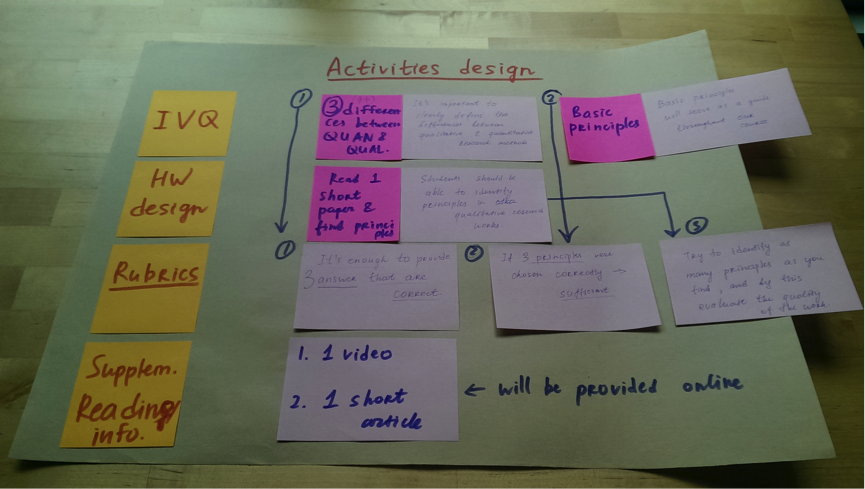語言交換:How to make it right?
- Skalnaya Oxana
- Dec 15, 2016
- 5 min read

This is a short course lasting about 40 minutes. This course has 3 sections: introductory part; explanation of the common problems and mistakes related to language exchange, and suggestions regarding how to make it right. We’ll also have two live conversations with my language exchange partner. We’ll share with you different learning resources and will provide our help with finding an LE partner. We’ll also have a live conversation with my language exchange partner. We’ll share with you different learning resources and will provide our help with finding an LE partner.
Course name
Language exchange: how to make it right?
Difficulty
Moderate, intermediate English level is required.
Target learners
Everyone who plans to use or is currently using language exchange as a learning tool is welcome to become our listeners.
Learning goals
The objective of this course is to explain what are common problems in language exchange and recommend how to make language exchange work.
Design characteristic
English is the most popular language for language exchange, thus our course is taught in English.
Students’ participation is encouraged and for this two additional tools are designed: a shared Google document and an FB group.
Bridge-in, objective, pre-test and participatory learning of the BOPPPS model are used.
A live conversation between my language partner and me is provided in order to exemplify a language exchange process and provide first-hand experience.
Multiple related resources will be provided.
Via FB group we’ll help students to match with language exchange partners.
Draft
The content presented above is mainly about the topic I’ve chosen at the outset – about qualitative research. My plan was to design an interactive course including a live conversation with one researcher from the outside company that specializes in qualitative research. However, a few days before the shooting I was notified that the lecturer won’t be able to participate. Therefore I decided to change my topic to “Language exchange: how to make it right” and start all over again.
Memo 10/05
主題: 質性研究之設計暨執行
內容特色: 授課語言為英文|3-5本課本(英文)|中文字幕| 案例分享 |寫作(小段落)
展區特色:
思考:
遊戲元素?
創新教學模式?
案例來源?
是否須另找尋相關專家進行訪問以便增加自己的瞭解且可能放進課程裡
Memo 10/12
教材:執行研究一系列的教材 “The Sage qualitative research kit”,共8本。 其他教材或參考書:輔助 [1.] Designing qualitative research / Uwe Flick -- [2.] Doing interviews / Steiner Kvale -- [3.] Doing ethnographic and observational research / Michael Angrosino -- [4.] Doing focus groups / Rosaline Barbour -- [5.] Using visual data in qualitative research / Marcus Banks -- [6.] Analyzing qualitative data / Graham Gibbs -- [7.] Doing conversation, discourse and document analysis / Tim Rapley -- [8.] Managing quality in qualitative research / Uwe Flick
Doing interviews: 想邀請 http://www.cc-dm.com/ 我之前實習的公司員工做分享
論文相關的提案也希望可以加進去,“Analyzing qualitative data” 可用
理論較多的章節計劃邀請學校教授做分享或是提供其他方面的協助,例如:好用的案例
設計思考與執行研究的連結:可以請 D-School 的人來分享
Memo 10/16
參考雲端資料夾的內容 OK
填寫需求單 OK
自我介紹 OK
課程內容的講稿 ->
提供具體規劃 ->
接洽深擊設計公司+教授 - 》 11月初進行課程錄製
Memo 10/31
題目更換:「語言交換:How to make it right?」
準備課程內容
拍攝次數:2 次
無字幕
拍攝練習:11/04
Modules
Unit 1: INTRODUCTION
Learning goals
What is language exchange?
What questions people have when it comes to language exchange?
Contents
Course introduction(2 mins)
Bridge-in: a photo(1 min)|Have you ever posted or seen messages like this?
知識點 1:語言交換是什麼?(4 mins)|What is language exchange? What are the common ways of doing language exchange?
知識點 2:語言交換相關的疑問(4 mins)|Language exchange is a free learning tool, but various problems abound...
Homework assignment(0.5 min)|請加入我們的臉書社團;請在 Google doc 上分享您曾在語言交換時遇到的問題;請觀賞這部小短片並思考語言交換的好處,您會有興趣嗎?
Reference
線上資源(網路與臉書)、自備的材料。
Video
Unit 2: COMMON PROBLEMS AND MISTAKES IN LE
Learning goals
說明語言交換優劣勢、常見的問題以及介紹常用的網站、應用程式。
Contents
Bridge-in:語言交換問題討論(3 mins)|Listening to a live dialogue with our guest Lisa.
知識點 1:語言交換優劣勢(3 mins)|Analysis of pros and cons.
知識點 2:語言交換中常見的問題(3 mins)
知識點 3:常用的網站以及應用程式(3 mins)|Popular websites and Popular apps.
Homework assignment(0.5 min)|Please find a member on the FB group to complete this assignment. Which website/app for language exchange do you like the most? You can choose among those we’ve introduced to you or any other you find. Please discuss with each other and post your discussion records in the group.
Reference
線上資源(網路與臉書)、自備的材料。
Video
Unit 3: SUGGESTIONS REGARDING HOW TO MAKE LE RIGHT
Learning goals
改善語言交換的建議。
Contents
Bridge-in(1 mins):案例分享
知識點 1:改善語言交換的方法(4 mins)
語言交換改進方法之討論(4 mins)|Listening to a live dialogue with our guest Lisa.
總結(2 mins)
Homework assignment(0.5 mins)|Prepare a message for your potential LE partner and post it on Google doc.
Reference
線上資源(網路與臉書)、自備的材料。
Video
The design concept
Teaching and learning
This course is relatively short, but it can have a more lasting impact on listeners. Apart from using shared online document, students are invited to become members of the FB group created for this course and thus get to know each other. Moreover, FB group’s administrator will assist in searching for a suitable language partner for each listener who is interested in acquiring one. There will be one 2-people group assignment, this is also especially designed for encouraging students to interact with each other and become learning partners.
Video
Apart from the first slide of the course and two live conversations with my language partner the whole course will be based on PPT slides + voice.

What I think MOOC will be
I’ve been a student for many years and what I observed is that professors don’t often use additional audio or video materials to support the course. However, since examples in our textbooks become outdated in very short time it would be very helpful for students to be informed of all the recent changes in the field they major in. Probably, MOOC team could cooperate with professors and their teacher assistants in this regard.
Where we started
My acquaintance with MOOC creative group began in May after I attended a lecture by Barbara Oakley, one of the professors of the famous online course “Learning how to learn”. I’ve learned that we have a special group in NTU dedicated to designing and producing online courses. Thereafter I attended summer training that lasted for about one month and now I’m wrapping up my own online course for the upcoming exhibition in December. Even though my participation during this semester was limited due to busy schedule at work I enjoyed learning some new skills and being close to the educational field, something that I’m very fond of.
Profile
A master student from the MBA program. Completed my bachelor program in Taiwan NCCU and have been working part-time since then. Plan to continue strengthening business, cultural, and educational ties between Taiwan and Russia.
I hope that other students will learn how to be an active learner or how to learn differently, and one of the ways to do this is via online courses. If someone wishes to contribute to the development of education in Taiwan – joining MOOC group is an excellent place to start.
Skalnaya Oxana
Question: 本內容為何選用 MOOC 作為課程的呈現媒介?






Comments